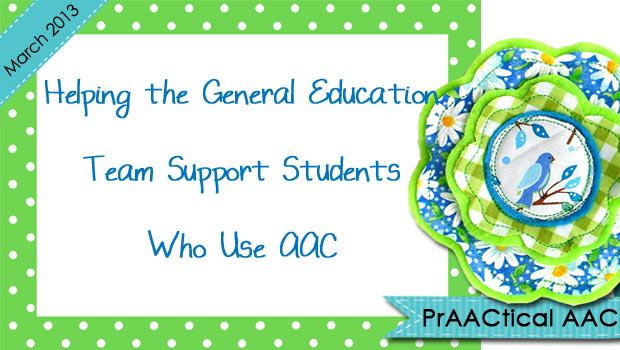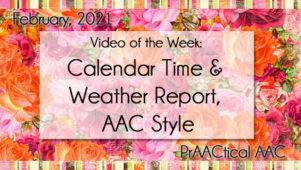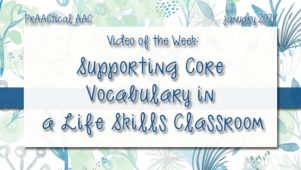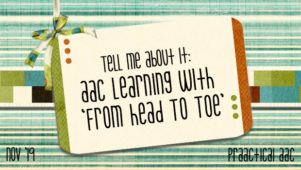Helping the General Education Team Support Students Who Use AAC

In the past few months, we’ve shared some articles on AAC in general education. We’ve looked at the development of an AAC intervention plan that relates to curriculum standards and using math and science standards as a context for building AAC skills. In this post, I’d like to share my own contribution to that issue of ASHA’s Special Interest Group (SIG) quarterly publication, Perspectives on AAC. Although the final versions are available only to SIG members, clearance has been given to post the original articles.
As we all know, AAC skills are best learned when the entire team is headed in the same direction, using robust instructional methods, and communicating well with one another. In this article, I discuss some of the ways that we can clarify the expectations of each team member so that all the bases are covered and our individual efforts complement one another. Thoughts on managing assessment demands are discussed along with ways in which team members can support students using AAC within the classroom. In that section, there is an example of using an observational tool to identify areas that have potential for increased AAC use in typical classroom exchanges. You can get a blank copy of that tool, Classroom Observation for Communication Opportunities with AAC (COCOA), in our ToolBox.
You can access the original version of the article here. We extend our appreciation to the AAC SIG for their work, especially the efforts of Gail Van Tatenhove, guest editor, and Sandy Grether, editor of Perspectives on AAC.
The reference for the published version of this article is as follows:
Zangari, C. (2012). Helping the general education team support students who use AAC. Perspectives on Augmentative and Alternative Communication, 21, 82‐91.
Filed under: PrAACtical Thinking
Tagged With: classroom, cocoa, general education, goals, inclusion, observation, team
This post was written by Carole Zangari




